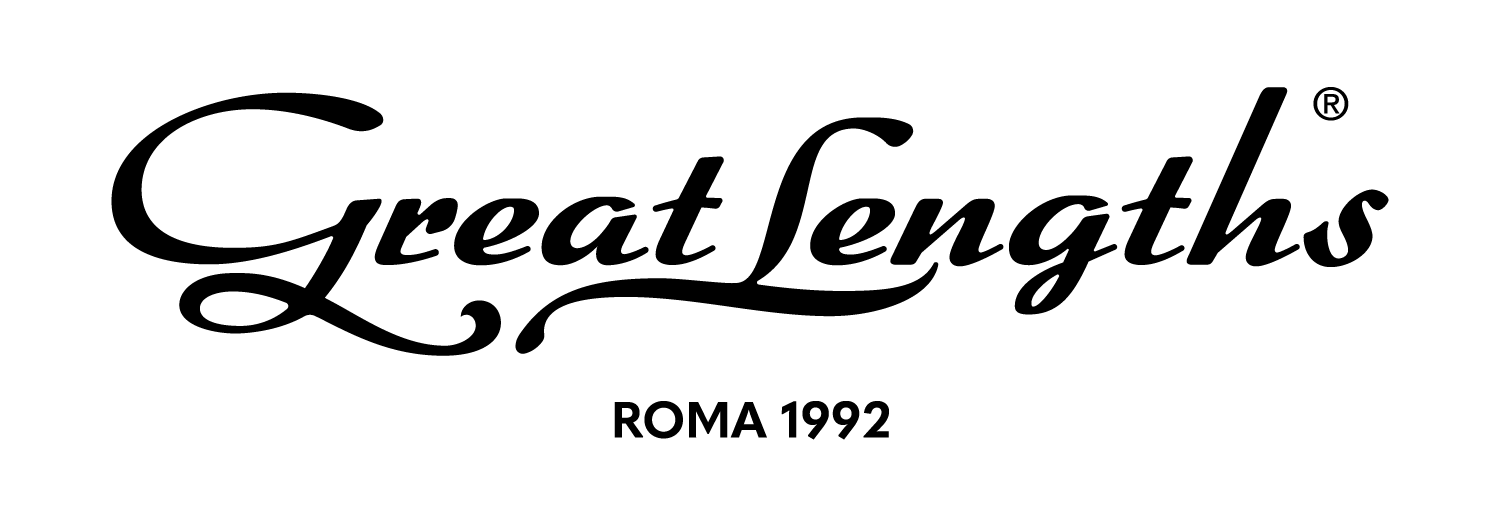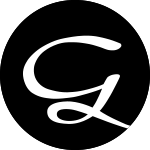Hair extensions glossary
Bonds
The bond is the site where the extension is attached to the natural hair.
Our keratin protein is not a glue. It is a polymer compound whose molecular structure mimics human hair. Many other inferior hair extension methods use other polymers that do not behave like human hair which often leads to the deterioration of the bond and cause the hair to fall out. The Great Lengths keratin bonds allow the hair to move naturally while at the same time having a strong hold on the hair without causing any damage to the hair shaft.
Watch Video On Keratin Bonds
Breakage
The most common causes of hair breakage are over-processing hair with harsh chemicals or hair that is heat styled. This results in dry, rough and fragile hair with split ends. In extreme cases the hair can be so damaged that it breaks off entirely. Another common reason for hair breakage is incorrectly applied hair extensions, any attachment too close to the scalp will cause tension on the scalp, redness, sensitivity and eventually breakage.
Brushed Hair (also known as “fallen hair”)
Brushed Indian hair is often marketed as Indian Temple hair when in fact the truth is that this hair may be of Indian origin but the sourcing happens in the streets of India. In fact, brushed Indian hair refers to the process where every day tens of millions of Indian women collect hair from their brushes and floors to sell to the “rag pickers” or door-to-door hair traders. The problem with this is that the hair is of poor quality and the method of collection means that the hair is often presented as a ball of yarn with the hair cuticle mixed in all different directions (non-remi). Thus, the hair is cheap to purchase but is not good for use in hair extensions because the cuticles face in both directions this will cause inevitable tangling and matting.
Cationic Sediment
A cationic polymer is a type of polymer that is frequently used in laundry fabric softeners, but also as conditioning agents for things such as shampoos and conditioners to help in helping reduce static and soften fibers/surfaces. However, just as the molecules demonstrate strong surface active properties they have extremely low solubility in water and build up of cationic sediment is very difficult to get rid of.
Chinese Hair
Chinese hair is available in large quantities, yet it is not structurally compatible with Caucasian hair. This type of hair has a round cross section whereas Caucasian hair has an oval cross section. The round cross section makes Chinese hair too thick and rigid texturally to look natural as hair extensions in Caucasian hair.
Clip In Hair Extensions
Clip in extensions are temporary extensions that are quick to apply for special occasions. The size of the clip in extensions can vary from one inch wide to a weft that contains 3-5 clips. They’re an option of cheaper hair extensions as they’re generally made with low quality human hair or synthetic hair. Clip in’s can be harder to maintain as they can’t be styled as part of your own hair, they need to be washed and dried completely separately. They should be avoided if your hair is too fine – the clips are be visible.
Cuticle
The cuticle of the hair is the hard, outer layer which acts as a protective barrier for the softer inner structure.
Chemically treated
Chemically treated refers to processes such as colouring, bleaching, perming or straightening hair which weakens and damages natural hair structure.
De-pigmentation
The process of removing the colour pigment from the hair. Great Lengths uses a gentle osmosis method to remove the colour particles from the hair. No other hair extension company uses this method. Other hair extension companies bleach the hair in order to get the colour out, this destroys the cuticle and overall condition of the hair.
Watch Video On De-Pigmentation
D-Panthenol
D-Panthenol is a widely used provitamin of B5, found in many hair care products. It is a long lasting moisturizer that conditions, prevents damage and adds shine to the hair.
Double Drawn
Great Lengths hair is double-drawn. This is a laborious manual process whereby shorter strands are removed. Great Lengths perform this process twice- hence the term ‘Double Drawn’ which ensures that the volume and thickness of the Great Lengths hair extensions strand is consistent all throughout its length. Inexpensive hair extensions are often wispy towards the ends and have shorter hairvisible in the strands.
Watch Video On Double Drawn
European Hair (Caucasian)
European Hair typically refers to hair of Russian, Spanish, Ukrainian or more seldom Swedish origins. However, European hair is Caucasian and generally very fine. Very often these women have given up their hair unwillingly, and are forced by their husbands and families in exchange for small sums of money. This hair is generally colour treated by traditional methods of bleaching and dyeing.
Indian Temple Hair
Indian hair is seen to be the best hair available in the world. It is strong, thick, healthy and in virgin condition. Consequently, Indian Temple hair has become a rather sought after commodity in the hair extension industry however there are facts you should be aware of when companies advertise that their hair extensions are such. Firstly, Indian hair is naturally black in colour, all other hair extension companies besides Great Lengths bleach the hair to remove the colour and then redye it to the desired colour. This process weakens the hair considerably leaving it dry and brittle. The condition is then disguised temporarily with silicones which coat the hair making it feel soft and silky. Secondly, longer women’s hair has the highest demand and is therefore the most costly to purchase at hair auctions. Grey hair sells for not even 10cents a kilo and many inferior companies buy the grey hair, mix it with black hair and sometimes Chinese hair too to bulk out the quantity. It is all bleached, dyed and silicone coated.
Watch Video On Removing Greys
Keratin
Keratin refers to a family of fibrous structural proteins. It is the key structural material making up the outer layer of human skin. As well, it is the key structural component of hair and nails. The Great Lengths Synthesized Keratin Bond molecular structure is specifically designed to mimic the molecular structure of human hair. Therefore, the result gives the Great Lengths bond functionality that is not available in any other hair bonding compound in the marketplace. The functionality is the Great Lengths bond has the ability to expand and contract with human hair. This makes it easier to maintain, less damaging and compatible with elements such as heat, water, sunlight.
Prebonded Hair Extensions
Also known as fusion hair extensions, itip,utip,vtip. This is a generic term for hair extensions that are supplied pre-tipped with various types of adhesives such as keratin, glue, plant based and petroleum based adhesives. If pre bonded, a application machine is used to soften the bond. Non prebonded methods use a “glue gun”. Prebonded hair extensions, such a Great Lengths, are the most discrete hair extensions. Moreover, prebonded or fusion hair extensions are the easiest to maintain. Swimming and exercising is possible and they are washed and styled as you would your natural hair. The added benefit is that you have wonderfully thick hair with volume every day for up to six months. With any pre-bonded product, if not applied and removed by a trained technician you could risk damage to your natural hair.
Micro Links
Also known as Micro Loop or Micro bead hair extensions. Micro Links are beads that are clamped onto the hair shaft. The inside of the bead has grooves (like a screw) which grip onto the hair. This can be damaging to your natural hair. Some micro links are metal which is particularly bad and damaging to your natural hair. When heat is applied to the metal rings, such as a blow dryer or hair straightener, the metal amplifies the heat on the hair inside it resulting in breakage.
Non-Remy
Roots and ends of non-remy hair are all mixed up. This results in the hair’s cuticle facing in opposite directions. As a consequence, tangling is a problem with non-remy hair as the cuticles catch on one another. Often this hair has been collected from brushes, dustbins and off hair salon floors etc.
Osmosis
Great Lengths hair is placed in osmosis baths where the black pigments are gently lifted from deep inside the cortex of the hair. This process of gently removing the pigment from the hair can take anywhere from 10 to 25 days to get it to the absolute lightest shade of blonde. From there on, new colour pigments are slowly inserted into the clean, empty space inside the cortex of the hair to produce the desired colour shade.
Watch Video On Depigmentation In Osmosis Baths
Remy/ Remi
The word ‘remi’ in french is derived from the latin word “Remix” and originally from the Proto-Indo-European word for ‘root’.
In the context of hair extensions this means that the root of the hair shafts in a bundle are all at the same end. This means that the cuticle is all facing the same direction which stops human hair on your head from tangling.
Watch Video On Remy Hair
Silicon
Many inferior hair extensions are coated with silicones. Silicones add shine and softness and the illusion of high quality hair in excellent condition. Unfortunately after only a few washes, the true quality of the hair emerges and you’re left with hair that dry and brittle.
Silk Protein
Silk proteins create a protective film which seals the hair cuticle. This increases comb-ability (detangling) and shine, and acts as a moisturizer by preventing drying. These properties make silk protein an excellent conditioning ingredient.
Tape Hair Extensions
Tape or skin weft extensions are semi permanent and very quick to apply. Many systems are reuseable however the quality of hair is generally not of a high standard and is likely to deteriorate with washing and styling. Typical application of a tape system, consists of a peel off strip approx 4cm in width which is attached under a section of hair and “sandwiched” with another extension on top of the hair section.
Virgin Hair
The hair is sourced from Indian temples in virgin condition- meaning that the hair has never been chemically treated, bleached with ammonia or peroxides or coloured.
Weft
A weft is a continuous hair extension that is either sewn or clipped into the hair. Typically it runs from one ear to the other and falls like a curtain of hair from the attachment area. Unfortunately most wefts are made from artificial hair which is cheaper or low quality human hair.
Weave Hair Extensions
Several sections of your own hair are tightly braided close to the scalp. A weft of hair is then sewn into the braid with a needle and cotton. If braids are made too tightly they can hurt and put strain on your scalp. Weaves are best for thicker hair because the braids take up a lot of your natural hair. Wefts can be obvious in very fine hair as there is not enough hair left to hide the weft. Weaves are generally made of wefts of artificial hair or low quality human hair.


